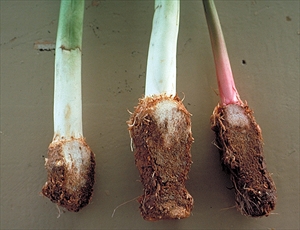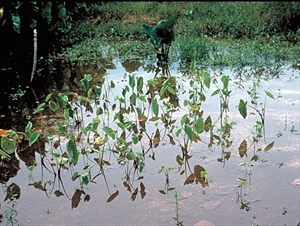- Narrow distribution. In Papua New Guinea, Solomon Islands and Taiwan, in dry land and swamps. An important nematode disease.
- The nematodes attack roots causing wilts, and invades corms from the base, causing brown, crumbling rots. Healthy parts turn red.
- Spread short distances by swimming or being moved in ground water. Long distance movement in planting pieces ('tops').
- Cultural control: remove roots from the tops, and inspect corm piece; do not plant down slope from previously infected fields; use hot water (51°C for 10 minutes) to establish source of disease-free plants.
- Chemical control: none recommended.








